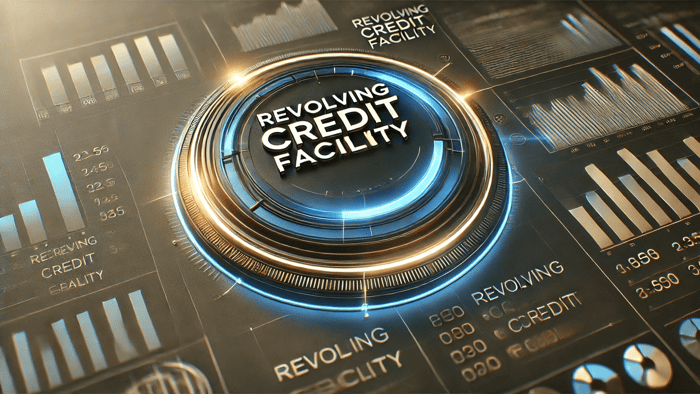In the world of project finance, accurately modeling financial mechanisms is critical to ensuring the long-term success of a project. One such mechanism is the Debt Service Reserve Facility (DSRF), which offers a flexible and efficient way to safeguard debt service payments without requiring large upfront cash reserves. In this article, we'll explore how to model a DSRF, how it differs from a more traditional Debt Service Reserve Account (DSRA), and why it can benefit project sponsors, particularly in optimizing equity returns.
What is a Debt Service Reserve Facility (DSRF)?
A Debt Service Reserve Facility (DSRF) is a credit facility designed to provide a financial safety net for debt service payments in the event that project cash flows are insufficient. Instead of requiring the project sponsor to hold a large amount of cash in reserve upfront, the DSRF allows a sponsor to access credit as needed to cover shortfalls, with the only upfront cost being up-front and commitment fees.
DSRF vs. DSRA: Key Differences
Before we dive into the modeling process, it's essential to distinguish a DSRF from a Debt Service Reserve Account (DSRA), as these terms are sometimes used interchangeably but function quite differently.
Debt Service Reserve Account (DSRA): A DSRA is a cash reserve account funded by the project, most commonly at financial close. A DSRA is typically funded with an amount equal to several months (often 6-12 months) of the maximum forward-looking debt service payments. The reserve sits idle unless it's needed to cover a debt service shortfall.
Debt Service Reserve Facility (DSRF): A DSRF, on the other hand, is a revolving line of credit provided by a lender that the project can draw upon when cash flows fall short of meeting debt service obligations. The sponsor only pays commitment fees if the facility is not drawn, and pays interest (base rate plus margin) on any amounts drawn. The size of the DSRF is typically the same as the DSRA cash requirement, covering 6-12 months of debt service, but without the need for upfront cash funding.
Key difference: A DSRA usually requires upfront capital, typically funded through additional equity at financial close, which ties up valuable resources that could otherwise be allocated to project development. Alternatively, some agreements allow the DSRA to be funded through the project's initial cash flows, though equity funding upfront is more common. This decision is often a point of negotiation between sponsors and lenders. By contrast, a DSRF offers more flexibility, as it allows sponsors to access credit only when necessary, reducing the need for immediate equity investment and freeing up capital for other uses.
Benefits of a DSRF for Sponsors
For sponsors, the DSRF offers significant advantages, particularly when it comes to optimizing returns on equity. Here's why:
Reduced Initial Cash Outlay: Unlike a DSRA, where the sponsor must commit substantial cash upfront, the DSRF requires no upfront cash payment. This reduction in upfront equity investment allows the sponsor to allocate more funds to other parts of the project or to reduce overall equity commitments.
Increased IRR: Since less upfront cash is required, the internal rate of return (IRR) for the sponsor increases. The freed-up equity means the sponsor has to commit less capital while maintaining the same revenue streams, thereby improving the overall project return.
Lower Carrying Cost: The DSRF typically incurs only a small commitment fee (if undrawn), unlike the opportunity cost of holding idle cash in a DSRA. Only when the DSRF is drawn upon does the sponsor incur interest charges (usually a base rate plus margin), which is often more cost-effective than tying up significant amounts of cash upfront.
Step-by-Step Guide to Modeling a DSRF
1. Understand the Debt Structure
Before setting up a Debt Service Reserve Facility in your financial model, ensure you comprehensively understand the project’s debt structure, including the loan terms, repayment schedules, DSRF target size, and any interest rate mechanisms (e.g., base rate + margin for DSRF). These details will shape how you model the facility and the associated costs.
For a detailed, step-by-step guide on how to implement a Debt Service Reserve Facility into a project finance model, you can refer to the Expert-Level Project Finance Modeling for Renewable Energy course which is part of the RVA Certification Program, where we cover DSRF modeling in-depth. This course includes a video tutorial that walks you through the entire process of setting up a DSRF in a best-practice project finance model.
The required DSRF size is typically specified in the loan agreement and is usually calculated to cover a certain number of months’ worth of debt service (both interest and principal payments). There are generally two approaches to sizing the DSRF:
Fixed Size at Financial Close: In most cases, the DSRF is sized once at financial close, based on the maximum forward-looking debt service obligation of the specified target period (for instance, six months) on a rolling basis during the entire financing period. This amount remains fixed throughout the life of the loan, regardless of changes in the forward-looking debt service.
Dynamic Adjustment: Alternatively, in some cases, the DSRF adjusts dynamically over time. The facility might decrease if the forward-looking debt service obligation reduces, particularly in the later years of the loan. However, this approach is less common than the fixed size method.
Formula for calculating the DSRF requirement:
- DSRF Requirement = [X] months of debt service
For example, if the loan agreement requires the DSRF to cover six months of debt service and the project’s annual debt service obligation is $12 million, the DSRF requirement would be:
- $12M / 12 * 6 = $6M
Unlike a DSRA, which requires that amount to be funded upfront in cash, the DSRF represents a credit line available to cover shortfalls as needed. Whether the DSRF remains fixed or adjusts dynamically depends on the specific terms agreed upon between the project sponsors and lenders.
3. Commitment Fees, Up-Front Fees, and Interest on Drawdowns
A key element in modeling the DSRF is accounting for the various costs associated with it: up-front fees, commitment fees, and interest charges.
- Up-Front Fee: Banks typically charge an up-front fee for setting up the DSRF facility, usually ranging from 1% to 1.5% of the total facility size. This one-time fee is paid at financial close and can be modeled as an initial cash outflow.
Formula:
- Up-Front Fee = DSRF Facility Size * Up-Front Fee Rate
For example, if the DSRF facility size is $6 million and the up-front fee is 1%, the fee would be $60,000.
- Commitment Fee: The commitment fee is paid to the lender for providing the credit line, even if no funds are drawn. It’s typically a percentage of the total facility size and is often linked to the applicable margin the bank charges. For instance, it could be 35% of the margin (if not drawn). You can model this as a regular cash outflow in your financial model.
Formula:
- Commitment Fee = DSRF Facility Size * (Applicable Margin * Commitment Fee Percentage)
For example, if the DSRF facility size is $6 million, the margin is 2%, and the commitment fee is 35% of the margin, the annual fee would be:
$6M * (2% * 35%) = $42,000
Interest on Drawdowns: When the DSRF is drawn to cover a debt service shortfall, the project will incur interest costs, usually at a base rate plus margin (e.g., LIBOR + 2%). This cost needs to be reflected in the model whenever there is a drawdown.
Formula:
- Interest = DSRF Drawn Amount * (Base Rate + Margin)
By accounting for these three types of costs—up-front fees, commitment fees, and interest charges—you can ensure that your financial model accurately reflects the expenses associated with using a DSRF.
4. Trigger Drawdowns and Model Replenishments
Your model needs to include triggers for when the DSRF is drawn upon. This happens when the project’s cash available for debt service (CFADS) is less than the debt service obligations. The model should show how much is drawn from the DSRF and adjust the cash flow accordingly.
Formula (if CFADS are below Debt Service):
- DSRF Drawdown = Debt Service – CFADS
Once a drawdown occurs, many loan agreements require that the DSRF be replenished to its full target level over time. Replenishments should be prioritized in your cash flow waterfall, ensuring that future cash flows are used to restore the DSRF before any equity distributions.
5. Run Sensitivity Analyses
As with all aspects of project finance modeling, sensitivity analyses are crucial. Test various downside scenarios, such as reduced project revenues or increased operational expenses, to see how often the DSRF would be drawn and what impact that has on the overall project’s financial health. This analysis helps stress-test the DSRF's adequacy.
Conclusion: Leveraging the DSRF for Optimal Project Financing
Modeling a Debt Service Reserve Facility is a powerful tool for optimizing a project’s financial structure. By reducing the need for upfront cash reserves and minimizing the sponsor’s equity investment, a well-modeled DSRF can improve the project’s internal rate of return (IRR) while still providing robust protection for debt service obligations.
For sponsors looking to enhance their project’s financial performance, understanding and accurately modeling a Debt Service Reserve Facility offers both flexibility and cost efficiency. If you’re interested in diving deeper into advanced project finance techniques like Debt Service Reserve Facility modeling, check out our Expert-Level Project Finance Modeling for Renewable Energy course, where we cover these concepts and more in detail.
Join the Renewables Valuation Analyst (RVA) Certification Program
Students who enroll in the RVA Certification Program gain access to all the content we’ve published, as well as all future courses and resources. The program is designed to provide a comprehensive understanding of renewable energy finance, covering everything from foundational concepts to advanced project finance techniques, including in-depth financial modeling and case studies.
The RVA Certification Program offers over 35 hours of video material and extensive hands-on training, preparing you to tackle real-world challenges in the renewable energy sector. Plus, once enrolled, you’ll have lifetime access to all current and future content.
Take your expertise in renewable energy finance to the next level by enrolling today:






